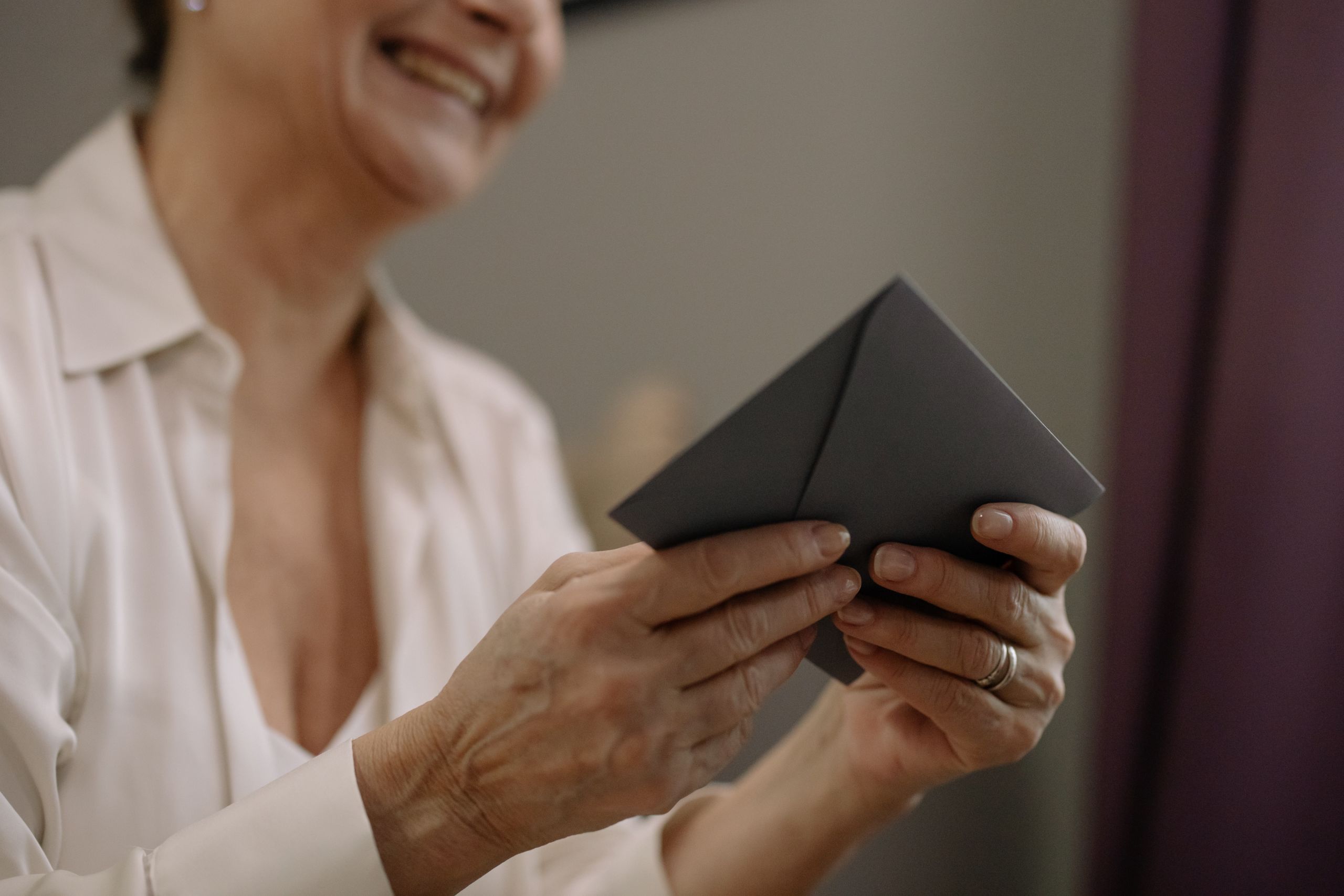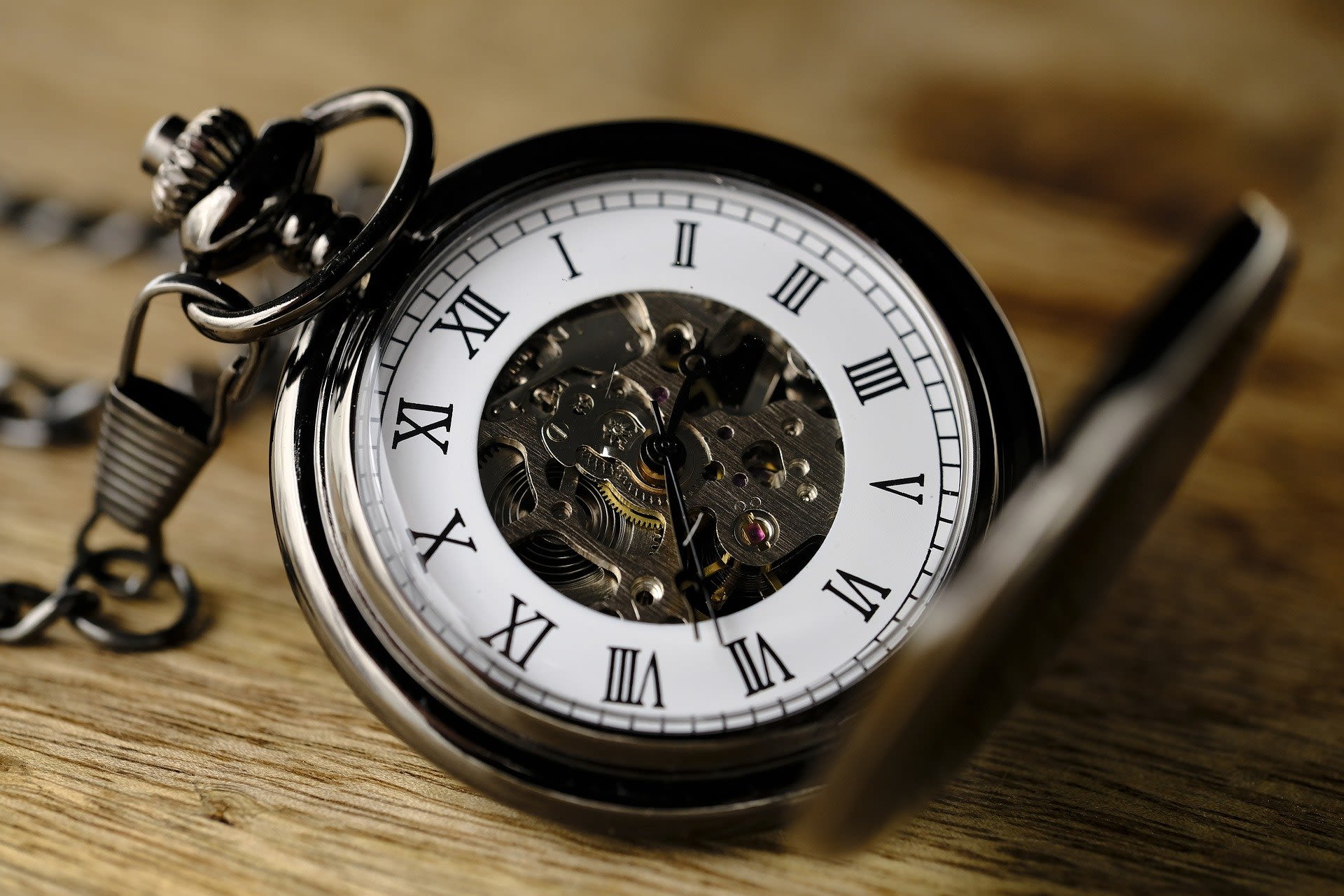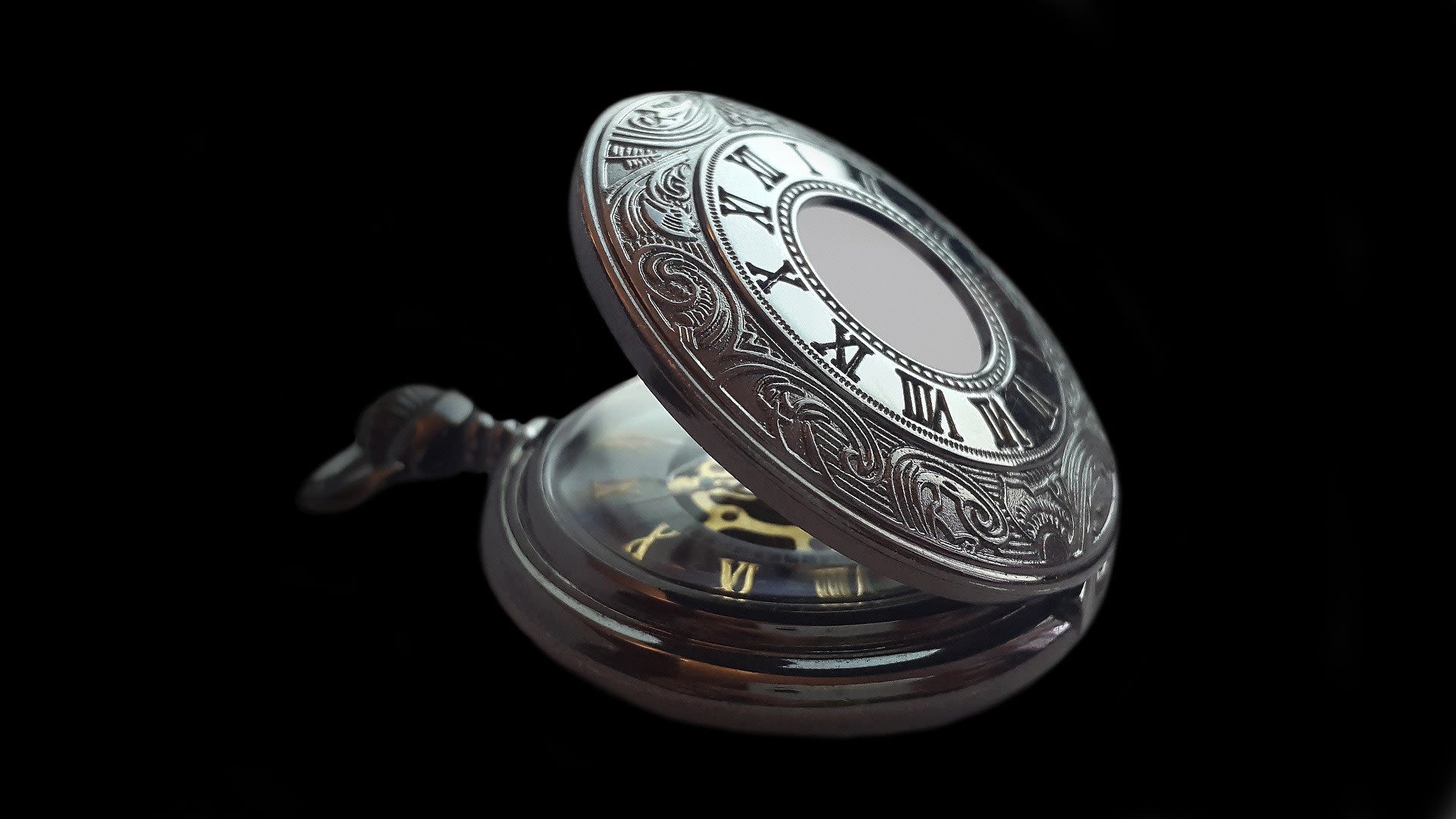IHT: Four things you should know
How trusts, gifts and careful planning can help your clients leave a lasting legacy to their loved ones

Inheritance tax is often branded the 'death tax' and viewed by many as an unfair grab by HM Revenue & Customs on assets already subject to tax.
For example, the family home was bought with post-income tax money and possibly subject to stamp duty.
Art, fine wine and stock market investments have all been bought with an individual's post-income tax – possibly dividend payments from income-generating investments have also been subject to tax.
So why should these all fall into someone's taxable estate on death?
The threshold rate of £325,000 has not changed since 1986; other reliefs and allowances have similarly been around since the 1980s and people feel IHT is ripe for reform.
As Edward Grant, director responsible for professional development at St James's Place, and Nick Bird, business development manager at Octopus, outline below, it is a highly emotive tax and in need of an update.
Click on their photos below to hear their comments.
The good news is that IHT is also a 'voluntary' tax, in that there are many established ways to mitigate the eventual IHT liability of one's estate upon death.
And with some slight changes to improve the administrative process of IHT, as proposed by the Treasury as part of the long-awaited Tax Day announcements, the process may become better for clients and advisers.
This guide, which qualifies for an approximate 60 minutes' worth of structured CPD, will explore using gifts and trusts so that you can explain to clients how these work in their circumstances.
It will also help you understand what other means can help mitigate tax bills, as well as outline what the Tax Day changes might mean for clients.
Simoney Kyriakou is senior editor of FTAdviser
What you need to know about trusts
Talk to most people about ‘setting up a trust’ and, if their eyes do not glaze over, you might see a flicker of fear: the process requires professional advice and is not easy for most people to understand at first.
But advisers will know they can be an effective solution by which IHT is significantly reduced, while ensuring loved ones can benefit from a legacy long after their dear one has shuffled off this mortal coil.
When creating these arrangements, whereby a group of trustees are tasked with looking after assets for chosen beneficiaries, it is important to consider the variety of people involved – in addition to the adviser and accountant.
Rachel de Souza, a partner in the private client team at RSM, provides a helpful glossary: “The settlor is the person who provides the assets; the trustee looks after the assets, and the beneficiary is the person who can benefit from the assets. A settlor may also be a beneficiary.” Beneficiaries can be named individuals or what is known as a class of beneficiaries.
As HMRC's Internal IHT Manual (see button, above) explains, normally, the deceased’s “settlement deed specifies a broad class of beneficiaries and the trustees [of the estate] have a choice of where they can exercise their powers of appointment”.
A trust deed is the paper record of all this information and contains the rules of the trust, although some trusts are automatically created in law – for example, leaving money to a minor in a will creates a trust as the beneficiary cannot take ownership until they reach 18.
Neil Jones, tax and estate planning specialist for Canada Life, adds: “The person creating the trust can also provide the trustees with a letter of wish, but this is not legally binding.”
Types of trust
There are various trusts. HMRC provides a detailed explanation of each one here: https://www.gov.uk/trusts-taxes. To summarise, these are:
- bare trusts
- interest in possession trusts
- discretionary trusts
- accumulation trusts
- mixed trusts
- settlor-interested trusts
- non-resident trusts.
Some of these are used in specific circumstances – such as non-resident trusts and settlor-interested trusts – but the four most commonly used are detailed below.
What trusts do
As Rachael Griffin, tax and financial planning specialist for Quilter, notes: “There are numerous reasons to have a trust, but two key elements are control and tax efficiency.
“Trusts offer a way to pass money to a loved one, subject to certain provisions, for example age, or the usage – ie a house deposit.”
Jessica Franks, head of tax for Octopus Investments, agrees that clients usually establish trusts as a way to make sure “assets are kept in the family over generations”.
She says: “They can be tailored to personal wishes, which gives much greater control over how money is used after it has been given away than making lifetime gifts.”
But they need to be set up correctly. Jones explains: “For a trust to be properly constituted there needs to be a person creating the trust [known as either the settlor or donor], named trustees and identifiable beneficiaries.
“There needs to be the asset or assets passing into the trust, sometimes referred to as trust ‘property’.”
A client setting up a trust can retain control of the assets, but will not have access to them.
The trustees may be subject to IHT when capital distributions are made, and on each 10th anniversary of the trust
However, because it can be difficult to know how much money a client might need later in life, giving up access to money by writing it into various trusts might not always be the best solution.
With this lack of access, it might seem that giving money away while alive might be the better option.
Andrew Dixon, head of wealth planning at Kleinwort Hambros, explains: “Why don’t individuals simply gift their assets away? Clients ordinarily will want or need to strike balance between control and access, and possibly speed of relief.
“It is a big step to make large gifts directly to children and grandchildren, so many clients prefer to gift with control, be it for fear of what the recipient will do with the gift, or for asset protection purposes, say, in the event of divorce.
“Trusts can play an important role in maintaining control of assets.”
It is a balancing act, in essence.
Are they really, truly tax-free?
Some clients might be mistaken for thinking there is no tax to pay whatsoever on assets held within trusts.
RSM’s de Souza bursts that bubble: “The trustees of a UK resident trust are taxable on the income and capital gains received on trust assets.
“They will generally also be within the IHT relevant property regime. This means that the trustees may be subject to IHT when capital distributions are made, and on each 10th anniversary of the trust.
“The relevant property regime is designed to ensure IHT is not bypassed altogether by the settlor giving their assets away to the trustees, and so not being subject to the death rate of IHT of 40 per cent.
“Instead IHT is collected regularly, potentially over a long period, resulting in an element of fairness in the IHT system.”
The info box below breaks this down.


When might CGT be payable in a trust?
CGT may be payable if assets are put into a trust.
Tax is paid by either the person:
1. selling the asset to the trust
2. transferring the asset (the settlor).
If assets are taken out of a trust, the trustees usually have to pay the tax if they sell or transfer assets on behalf of the beneficiary. There is no tax to pay in bare trusts if the assets are transferred to the beneficiary.
Sometimes an asset might be transferred to someone else but capital gains tax is not payable.
This happens when someone dies and an ‘interest in possession’ ends.
A beneficiary gets some or all of the assets in a trust. Sometimes the beneficiary of a trust becomes ‘absolutely entitled’ and can tell the trustees what to do with the assets, for example when they reach a certain age.
In this case, the trustees pay capital gains tax based on the assets’ market value when the beneficiary became entitled to them.
Source: HMRC

Dziana Hasanbekava via Pexels
Dziana Hasanbekava via Pexels
Most advisers will also recognise that it sometimes depends on how much, and when, you settle assets within a trust.
As Octopus Investments’ Franks notes: “Values settled into trust during a person’s lifetime also take seven years before becoming exempt from IHT.
“If the client dies before then, the amounts settled into trust will be included in their estate, and IHT will be payable if the estate is valued at more than the nil-rate band.
“There are other charges to consider too, which can make trusts an expensive option and means they may not appeal to everyone.”
Kleinwort Hambros' Dixon adds care needs to be taken over the “nuances of English and Scottish law in respect of trusts” – professional partnerships will therefore be important for advisers.
All these conditions will need to be explained thoroughly to clients.


Ron Lach via Pexels
Ron Lach via Pexels

Don't give what you might need while alive. Photo by Arina Krasnikova via Pexels
Don't give what you might need while alive. Photo by Arina Krasnikova via Pexels

Any gift must be demonstrably in the enjoyment of the recipient for up to seven years before death. Photo by Andrew Neel via Pexels
Any gift must be demonstrably in the enjoyment of the recipient for up to seven years before death. Photo by Andrew Neel via Pexels
How gifts can be used in IHT plans
Gifting sounds simple enough: make monetary or gifts of value to your loved ones while you are alive.
“A gift”, says RSM's de Souza, “is the passing of legal title to an asset for no return”.
On the face of it, it sounds like a great way to help clients’ families and the charitable causes they support, while they are around to see how the gift benefits the recipients. And done right, it falls outside of the client’s estate for IHT purposes.
But it is not quite that simple, as Quilter's Griffin comments. She says: “Gifting money to the next generation sounds like it should be straightforward, but from a tax perspective it is anything but.”
Relationships first
First things first, Griffin suggests understanding what tax exemptions are applicable depending on a client’s relationship status.
This is because there is no IHT to pay on transfers between most married couples or civil partners domiciled in the UK, no matter the amount.
Individuals are also entitled to give away £3,000 in total, in any tax year, free from IHT. This allowance can be backdated by one year, so where the full £3,000 is not used in one tax year it can be carried forward to the next.
Griffin says: “This means a married couple could give away a total of £6,000 a year to their children without incurring IHT (or £12,000 if the previous year's allowances were unused).”
But single also people benefit from the rules around gifts.
As HMRC's 93-page report – Lifetime Gifting: Reliefs, Exemptions, and Behaviours – notes, IHT is not applied to the majority of gifts made during the lifetime.
"Those to which it does apply are where a donor dies within seven years of making the gift or lifetime transfers into a relevant trust or company," the report states.
“Within these there are exemptions, such as gifts to a spouse/civil partner, gifts to charities and qualifying political parties and there is an annual exemption on gifts to the value of £3,000.”
Categorising gifts
Canada Life's Jones adds: “There are also certain exemptions that people can use for lifetime gifting.
"For example, as many small gifts of £250 as they like [but not to the same person who received the £3,000], certain gifts on marriage of up to £5,000 and the ability to gift genuine surplus income.
Don’t gift assets you will need
“Other gifts such as those made within seven years of death and those to some types of trusts, such as discretionary trusts, are not exempt and are chargeable at the time the gift is made, either during the lifetime or on death.
“The first £325,000 is chargeable at 0 per cent IHT, [ie] the nil-rate band. Any chargeable lifetime gifts over this amount in a seven-year period are chargeable to lifetime IHT at 20 per cent.”
Lifetime gift
One of the most common is the lifetime gift. Octopus Investments' Franks calls it a “modest annual gifting allowance”, whereby cumulative gifts of up to £3,000, made over the course of the tax year, will immediately be exempt from IHT.
She adds: “What’s more, if the full £3,000 annual exemption isn’t used in one year, the remainder, or ‘carry over’, can be used the following year – although it can’t be carried over beyond one year.”
But doing so means giving up control or benefit of the assets – so if your client does not want to relinquish control (or does not trust his daughter’s husband, for example), lifetime gifts might not be the first port of call.
Advisers also need to make sure a client will not need the money later in life. Kleinwort Hambros' Dixon explains: “In the UK, it is generally not possible to gift and continue to benefit from that gift.
“So when we talk about access and gifting, we are referring to the need to ensure you have sufficient income or access to cash flow for your lifetime expenditure and living arrangements – essentially, don’t gift assets you will need.”
Small gifts
There are other gifts that are free from IHT; those ‘small gifts’ of up to £250 that can be made as many times in the tax year as the donor likes.
These small gifts are known as normal expenditure from income and this is what Griffin calls an “often-underused exemption when it comes to gifting during your lifetime”.
To benefit from this exemption the gifts need to be made regularly (eg yearly) and out of true income (eg dividends and interest from investments).
“Provided they do not affect your usual standard of living, they should be exempt from IHT”, she says.
Making that decision at least seven years ahead can be difficult
There is no maximum limit on the amount that can qualify for this IHT exemption, although this amount is only confirmed as exempt on death and therefore some gifts may still be classed as being within the estate.
Other exemptions to tax are wedding gifts, up to a certain amount, and gifts to charities, political parties and universities.
But there are caveats, as Franks warns: “Clients cannot use their annual exemption and their small gift exemption on the same person in the same year.” So the lucky recipient of the £3,000 cannot also get gifts of £250.
The seven-year rule
Lifetime gifts in excess of these small allowances will take seven years to be exempt from IHT. These are known as potentially exempt transfers (PETs).
Franks says this means having detailed conversations with clients as to what this means for them.
She explains: “Clients will need to be sure that they won’t need access to the assets they give away during the rest of their lifetime.”
This does not just apply to cash. Suppose your client has a beautiful painting on their living room wall. If they give it to their daughter and she takes it to hang in her home, this qualifies as a gift because she gets to enjoy the benefit of that gift.
If they merely ‘earmark’ the painting for her, and keep it in their house, it will not be considered as a gift and therefore will be included in the estate for IHT purposes. The same applies to other situations, such as ‘giving’ the house to a child but continuing to live in it.
De Souza hammers home this point: “If the gift is not outright, for example because the donor retains the right to use the asset, then it may not just be ineffective for IHT purposes – it may make the IHT situation worse than having done nothing.”
So advisers helping executors calculate the IHT need to be clear about gifts and when they were made. Canada Life’s Jones states: “On death, when calculating IHT, the executors need to look back at any gifts made in the seven years before death.
“These are added into the calculation in chronological order; eldest first, before including the estate that they leave when they die.”
This is where HMRC will require taper relief to be applied. HMRC describes this as “the sliding scale of the rate of tax applied to ‘failed PETs’, with higher rates applying to gifts made in years closer to the point of the donor’s death”.
The first £325,000 is charged at 0 per cent and the balance chargeable at either 36 per cent or 40 per cent – the reduced rate is available where sufficient charitable donations have been made.
And, as Franks remarks: “Making that decision at least seven years ahead can be difficult, given that none of us can predict how long we will live for.”
Alternative ways to mitigate IHT liability
Assuming your clients do not intend to spend everything on fine wine and glamping, IHT will be a consideration.
IHT is paid at 40 per cent on the part of a deceased person’s estate above the current threshold of £325,000.
There are various rules and exemptions; HMRC outlines the most common as:
- Where the estate is left to a spouse or civil partner there is no tax to pay.
- The threshold rises to £500,000 where a home is being passed to children or grandchildren.
- The threshold is added to that of a spouse or civil partner, meaning it can increase to £1m on the death of both partners.
- The rate can be reduced to 36 per cent if 10 per cent or more of the value of the estate is left to a charity.
Many people are now considering if they can afford to leave a pension lump sum
RSM's de Souza advises clients to “Remember that wealth inherited by your spouse/civil partner is not subject to IHT.
“That is, unless the heir is non-UK domiciled and the donor is domiciled, in which case specialist advice should be sought.”
But outside of a complication arising due to domicile, there are many ways advisers can help UK-based clients to mitigate the eventual IHT bill their loved ones will be left with.
Canada Life's Jones says: “The potential solutions can be numerous.”
Not only can one make gifts and create a range of trusts, as the previous two articles have outlined, but there are other ways that money can be “tax-effective for passing on wealth through generations”.
Pensions
The first port of call is the pension. Quilter's Griffin says: “IHT is fiendishly complicated, but there are multiple ways to mitigate the tax that a client may have to pay.
“One of the most tax-efficient tools for this is a pension. Funding a pension over the years is not only sensible for your later life; it is also incredibly tax savvy. In most circumstances a client can pass on their pension free of IHT.”
But Jones notes: “Pensions are IHT efficient as the money in a pension sits outside the taxable estate and can be passed onto beneficiaries. However, the original client loses control.”
De Souza agrees this could often be a “sensible” decision for clients to use up their non-pension assets in their retirement – such as Isas or cash holdings – “thereby reducing the value of your IHT estate on death, in priority to accessing your pension”.
It is also becoming a very popular part of end-of-life planning, says Octopus Investments' Franks.
She explains: “Many people are now considering if they can afford to leave a pension lump sum as a way of passing down wealth.”
This is certainly something people would need to take advice on, as in reality there are caveats surrounding how a pension can be passed on.
A lot also depends on the type of pension, the complexity of the client’s relations (do they have a previous marriage?), when the person actually dies and, in some cases, the scheme rules.
For example, IHT can apply to payments from annuities if the estate is entitled to a guaranteed payment or if value protection is applied.
Moreover, as Franks details: “While the pension owner is older than 75 when they die, the beneficiary will have to pay income tax on it at their marginal rate as they draw down the money, which could be as high as 45 per cent.”
Perhaps if your client expects to live way into their 90s, trusting in the pension pot to provide a lump sum to the beneficiary might not be the most tax-efficient solution.
Life assurance
Should the client have life insurance, any payout would form part of their legal estate, and may therefore be subject to IHT if the assets breach the £325,000 threshold.
However, by writing it into trust, the money will not need to go through probate and means any payout on death can be paid directly to the nominated beneficiaries rather than to the estate.
Provided shares are sufficiently liquid, clients could sell some or all of their investment to meet needs, such as care
De Souza says: “This does not reduce the amount of IHT that will be payable, but provides a means of paying the IHT from the proceeds of the insurance on death.
“If properly structured, the proceeds themselves will not be subject to IHT.”
Jones comments that even if life insurance is not written into trust, it does provide a lump sum that can be used to pay the IHT, so could be a cost-effective solution.
Sweet charity
Charitable donations are not subject to IHT and, providing at least 10 per cent of the net estate is left to charity, the IHT rate is reduced to 36 per cent – “again, this is often overlooked,” says Jones.
Kleinwort Hambros' Dixon says this is an important consideration to discuss with clients who have “philanthropic intentions, so they can leave some of their estate to charity”.
This might best be done with the full knowledge of family members, to avoid disagreements after death.
“There is no one-size-fits-all approach.”
BPR/AR
Speaking to the financial industry’s love of acronyms, BPR (business property relief, sometimes referred to as BR) and AR (agricultural relief) can help mitigate the IHT bill.
Holdings in a private qualifying business or a portfolio of AR or BPR-qualifying investments can be passed on at death free from IHT, provided they have been held for at least two years.
“This makes BPR qualifying investments advantageous for two reasons,” says Franks. “First is access; because the client owns the investment, they retain complete control.
“Provided shares are sufficiently liquid, clients could ask to sell some or all of their investment to meet needs that are not anticipated today, such as care home fees.
“Second is speed. Whereas making gifts or settling assets into trust usually takes seven years to achieve full IHT exemption, a BPR-qualifying investment achieves this once it is held beyond two years, provided the shares are still held at the time of death.”
That said, investing in BPR-qualifying businesses isn’t for everyone, because the investments made are in companies not listed on a main stock exchange, and are therefore higher-risk, while unquoted or Aim-listed investments are likely to have higher volatility levels.
Jones says: “BR schemes generally carry a higher level of risk and will then pass to a beneficiary, creating potential IHT issues for them.
“Increasing the level of risk wealth accumulating during a lifetime will not suit all.”
This is where independent advice shows its worth.
As Dixon comments: "Planning for IHT will involve myriad financial products, all aiming to balance three aspects: control, access and speed of relief."

Abdullah via Pexels
Abdullah via Pexels

Mat Brown via Pexels
Mat Brown via Pexels

Mike via Pexels
Mike via Pexels










What Tax Day means for IHT
Thankfully for tax advisers and financial planners across the UK, the much-anticipated Tax Day was little more than an announcement that the government was putting out 30 different consultations, documents and responses.
Most of these were confirming what previous Budgets had already indicated, and there were no big changes announced to reliefs, exemptions, allowances or eligibility criteria.
There were a few, small details, however, mostly around cleaning up the administrative process of IHT.
In the update, Jesse Norman, financial secretary to the Treasury, said it was "cutting IHT red tape for more than 200,000 estates every year, dramatically reducing the amount of paperwork many families fill out".
This is a step forward towards greater simplicity, but leaves the system largely unchanged
This means that more than 90 per cent of non-taxpaying estates each year will no longer have to complete IHT forms when probate or confirmation is required from January 1 2022.
Reporting regulations will also be updated for estates where the deceased was never domiciled in the UK but owned indirect interests in UK residential property.
This was a great disappointment to tax professionals, especially after a series of reports over the past few years, many of which called for a more radical rethink of IHT in the UK, particularly as some of the reliefs and thresholds were set in the 1980s.
Quilter's Griffin says: "This is a step forward towards greater simplicity, but leaves the system largely unchanged."
In reports published in November 2018 and July 2019, the Office of Tax Simplification set out its proposals for reforming IHT.
The first report concentrated on reducing the paperwork and heavy administration burden associated with IHT. The second report focused on updating certain reliefs and exemptions.
The report by the all-party parliamentary group, issued in January 2020, favoured radical reform and abolition of many of the current IHT reliefs.
While Tax Day has not ushered in significant reforms and recommendations – rather a 'tidying up' of the IHT legislation and administration – commentators have expressed hope that a proper overhaul of IHT may yet be on the cards.
Talking trusts
Trusts did not get an airing on Tax Day, but there may be more tweaking to trust law to come.
Judith Millar, tax partner at BDB Pitmans, says: "On the final report from the review into trusts (2018), Tax Day has offered the government the opportunity to catch up on a consultation that was at risk of falling off the radar."
In November 2018 HMRC launched a consultation (The taxation of trusts: a review), with the chancellor having announced a commitment to consult on "how to make the taxation of trusts simpler, fairer and more transparent" the year before.
Millar adds: “The government’s stated objective was to weigh up options for targeted reforms based on the views and evidence presented but, rather disappointingly, we are simply promised that the government will ‘continue to review specific areas of trust taxation on a case-by-case basis’ without any concrete proposals.
"Of more interest perhaps, in the context of trusts, is the absence of comment in the command paper on future policy in relation to capital taxation.
"It can only be a matter of time before IHT and CGT reappear on the government’s tax agenda, at which point trust tax reform may head in a different direction.”
Only a matter of time, indeed.
Simoney Kyriakou is senior editor of FTAdviser

Bank your CPD here

